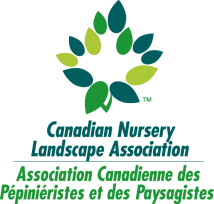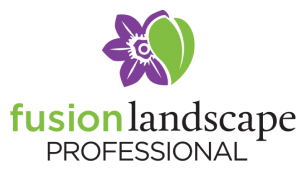Incorporating native Wisconsin plants into your landscape is a powerful way to support local pollinators and promote biodiversity. Native plants are naturally adapted to the local climate, soil conditions, and ecosystems, making them an excellent choice for creating a sustainable, low-maintenance garden. In this post, we’ll explore the benefits of using native plants in your garden, how they support local pollinators, and which plants are best suited for Green Bay’s environment.
Why Use Native Plants?
Native plants provide many ecological benefits, from supporting local wildlife to improving soil health and water retention. In addition, they are easier to care for since they are adapted to the local climate and soil conditions. For pollinators, native plants are particularly important because they offer a rich source of nectar and pollen, which is vital for their survival. These plants also provide habitat for a wide range of beneficial insects, birds, and other wildlife.
By choosing native plants, you are helping to maintain local ecosystems that have evolved over thousands of years, supporting pollinators like bees, butterflies, and hummingbirds that are critical for the health of plants and food crops in the region.
The Role of Native Plants in Supporting Pollinators
Pollinators, such as bees, butterflies, moths, and hummingbirds, play a crucial role in the reproduction of many plants by transferring pollen from one flower to another. This helps to fertilize plants, enabling them to produce seeds and fruit. Unfortunately, many pollinators are facing declines due to habitat loss, pesticide use, and invasive plant species.
Native plants help reverse this trend by providing a habitat and food sources for these essential creatures. These plants produce flowers at different times throughout the growing season, ensuring that pollinators have a consistent supply of nectar and pollen. For example, purple coneflower, milkweed, and black-eyed Susan all bloom at different times, supporting pollinators throughout the spring, summer, and fall.
Best Native Plants for Pollinators in Green Bay
When selecting native plants for your garden in Green Bay, it’s important to choose species that are well-suited to the local climate and soil conditions. Here are some of the best native plants for supporting local pollinators in Green Bay:
- Milkweed (Asclepias Syriaca)
Milkweed is a vital plant for monarch butterflies, as it serves as a host plant for their larvae. The nectar-rich flowers also attract bees, butterflies, and hummingbirds. Milkweed is drought-tolerant and thrives in full sun and well-drained soil, making it perfect for Green Bay’s climate. - Purple Coneflower (Echinacea purpurea)
Known for its striking purple flowers, the purple coneflower is a favorite of bees and butterflies. This hardy perennial is easy to grow in Green Bay and blooms from mid-summer to fall, providing a late-season nectar source for pollinators. - Black-eyed Susan (Rudbeckia hirta)
Black-eyed Susan is another excellent plant for pollinators, especially bees. Its bright yellow flowers are a favorite nectar source, and its long blooming period ensures that pollinators have food throughout the summer. Black-eyed Susan grows well in both sun and partial shade and can thrive in a variety of soil types, including clay. - Bee Balm (Monarda didyma)
Bee balm is a member of the mint family and produces fragrant, tube-like flowers that attract bees, butterflies, and hummingbirds. This plant is especially valuable in late summer when many other flowers have stopped blooming. Bee balm thrives in full sun and moist, well-drained soil. - Blazing Star (Liatris spicata)
Blazing star is an upright perennial with spiky purple flowers that attract bees, butterflies, and other pollinators. It blooms in late summer and fall, adding color to your garden as other plants begin to fade. Blazing star thrives in full sun and well-drained soil and is perfect for adding vertical interest to your garden. - Goldenrod (Solidago spp.)
Goldenrod is a late-blooming native plant that provides a critical nectar source for pollinators in the fall. It is especially beneficial for bees and butterflies preparing for winter. Goldenrod grows well in a variety of soil conditions and can tolerate both full sun and partial shade.
How to Incorporate Native Plants into Your Landscape
- Plan for Seasonal Blooming
When selecting native plants, consider planting a variety of species that bloom at different times throughout the growing season. This ensures that pollinators have a continuous food source from spring to fall. For example, combine early-blooming species like spring beauty and bloodroot with mid-summer bloomers like purple coneflower and late-blooming plants like goldenrod. - Group Plants by Their Needs
Native plants typically have similar soil, light, and moisture requirements. To make your garden care easier, group plants with similar needs together. This helps reduce the amount of water and fertilizer you need to provide while ensuring that each plant thrives. - Create Habitat for Pollinators
In addition to planting native flowers, consider adding features that support pollinators, such as a shallow water source, a small rock pile for insects to hide in, or a brush pile for shelter. Creating a diverse and supportive environment encourages pollinators to visit and stay in your garden. - Avoid Pesticides
Pesticides can harm pollinators, so try to avoid using them in your garden. Instead, use natural pest control methods like attracting beneficial insects (such as ladybugs and lacewings) or using organic pest repellents. Eco-friendly pest control services can help keep your garden healthy without harming pollinators.
Working with Landscaping Professionals
If you’re unsure which native plants will work best in your garden or need help designing a pollinator-friendly landscape, consider consulting with a landscaping professional. Experts can help you select the right plants, ensure they are properly spaced, and provide advice on care and maintenance.
Conclusion
Incorporating native Wisconsin plants into your landscape is one of the best ways to support local pollinators and contribute to the health of the local ecosystem. By choosing plants like milkweed, purple coneflower, and bee balm, you can create a garden that attracts bees, butterflies, and other beneficial insects while also improving soil health and reducing maintenance. Whether you’re a beginner or an experienced gardener, integrating native plants into your yard will provide long-term benefits for both your garden and the environment.





